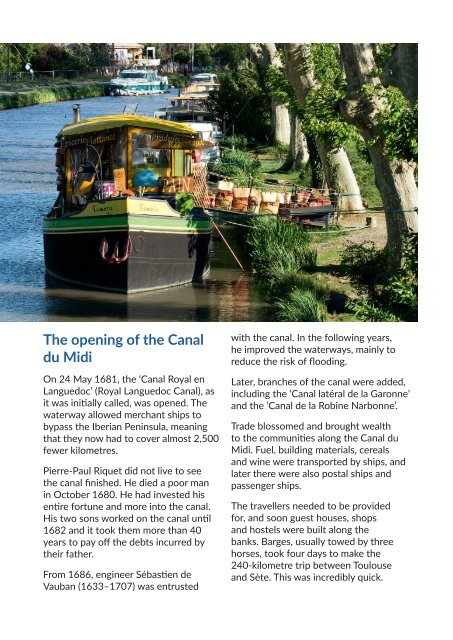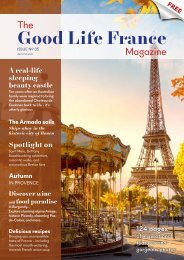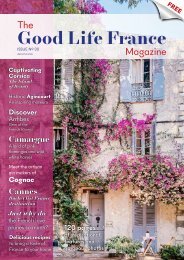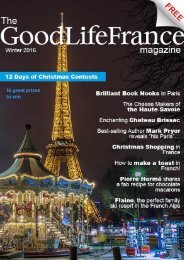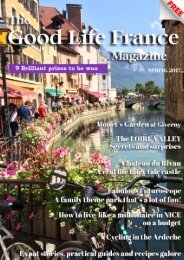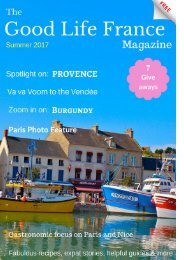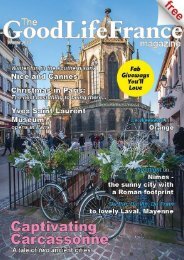Issue No. 28
This gorgeous issue is stuffed full of fabulous features from beautiful Annecy to the sunny southern Basque country and the city of Pau, the Canal du Midi and much more. There’s a fabulous photo essay of the four seasons of Provence, practical guides and recipes galore with a focus on the gastronomy of the Touraine region in the Loire Valley - from an ancient recipe for macarons to more-ish nougat cake!
This gorgeous issue is stuffed full of fabulous features from beautiful Annecy to the sunny southern Basque country and the city of Pau, the Canal du Midi and much more. There’s a fabulous photo essay of the four seasons of Provence, practical guides and recipes galore with a focus on the gastronomy of the Touraine region in the Loire Valley - from an ancient recipe for macarons to more-ish nougat cake!
- No tags were found...
You also want an ePaper? Increase the reach of your titles
YUMPU automatically turns print PDFs into web optimized ePapers that Google loves.
The opening of the Canal<br />
du Midi<br />
On 24 May 1681, the ‘Canal Royal en<br />
Languedoc’ (Royal Languedoc Canal), as<br />
it was initially called, was opened. The<br />
waterway allowed merchant ships to<br />
bypass the Iberian Peninsula, meaning<br />
that they now had to cover almost 2,500<br />
fewer kilometres.<br />
Pierre-Paul Riquet did not live to see<br />
the canal finished. He died a poor man<br />
in October 1680. He had invested his<br />
entire fortune and more into the canal.<br />
His two sons worked on the canal until<br />
1682 and it took them more than 40<br />
years to pay off the debts incurred by<br />
their father.<br />
From 1686, engineer Sébastien de<br />
Vauban (1633–1707) was entrusted<br />
with the canal. In the following years,<br />
he improved the waterways, mainly to<br />
reduce the risk of flooding.<br />
Later, branches of the canal were added,<br />
including the ‘Canal latéral de la Garonne’<br />
and the ‘Canal de la Robine Narbonne’.<br />
Trade blossomed and brought wealth<br />
to the communities along the Canal du<br />
Midi. Fuel, building materials, cereals<br />
and wine were transported by ships, and<br />
later there were also postal ships and<br />
passenger ships.<br />
The travellers needed to be provided<br />
for, and soon guest houses, shops<br />
and hostels were built along the<br />
banks. Barges, usually towed by three<br />
horses, took four days to make the<br />
240-kilometre trip between Toulouse<br />
and Sète. This was incredibly quick.


